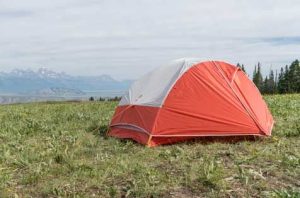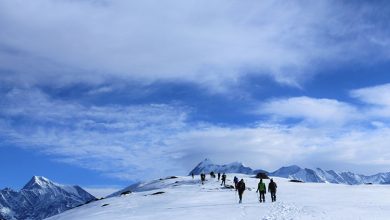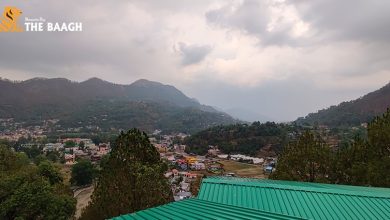How to Choose Tents for Camping: A Step-by-Step Guide

Vehicle setting up camp with family or companions is a mid-year leisure activity for many of us. Whether the actual campsite is the principal fascination or it’s essentially your headquarters for adjacent exercises, This manual will help you put up your camp tent—your favorite hangout spot—correctly.
If you are looking for tents for camping, Then Alvator is the online provider of the best quality fabric, unique designs, and easy fold-down tents bed tents, beach tents, camping tents, kid’s tents, and many more at many affordable prices. Buy now and get a 30% discount on Alvantor Coupon Code while shopping with us.

Tent Sleeping Capacity
While picking your tent, first select a model in light of your gathering’s size and regardless of whether you could require extra space for additional companions, stuff, or canines. Recognize, at any point, that no industry standard exists that characterizes per-individual tent aspects.
While assessing tent limit evaluations, our overall guidance is this: Assume a nearby fit. Assuming you look for more space, consider leveling up your tent limit by one individual, especially if you or your standard tent partner(s):
- are huge people
- are claustrophobic
- thrash around evening time
- rest preferably with additional over average breathing room
Seasonality of Tents
Tents for 3 Seasons
The most popular tent, 3-season tents, are lightweight shelters designed for generally mild spring, summer, and fall seasons. They are typically outfitted with adequate cross-section boards to help wind stream. Appropriately pitched with a rigid rainfly, 3-season tents can endure deluges yet are not the ideal decision for openness to cruel tempests, vicious breezes, or weighty snow. Network boards keep out bugs (however can, in any case, allow in fine blowing sand).
The essential elements of 3-season tents:
- Give protection. Keep dry while it’s raining or snowing lightly.
- Safeguard you from bugs.
3-4-Season Tents
Expanded season (3+ season) tents are designed for delayed 3-season use, appropriate for summer use yet additionally trips in late-winter and pre-winter when who might experience moderate snow.
Ordinarily, they incorporate 1 or 2 a more significant number of posts and fewer lattice boards than unadulterated 3-season models. Extended season tents are a good option for regular trips to the open-air—high-height objections. While extremely strong, they are not as wholly strengthened for unforgiving winter climate as 4-season tents.
4-Season Tents
Designed to endure furious breezes and significant snow loads, mountaineering tents can be utilized in any season. However, their main capacity is to stand firm notwithstanding a frigid climate, essentially in winter or above treeline.
Compared to 3-season tents, they have more poles and a thicker texture. Their modified vault layouts eliminate level rooftop regions where snow might accumulate. They don’t have a lot of lattice boards or rain flies that are close to the ground. It prevents airflow, making them feel hot and stodgy even in mild weather. A 4-season tent, on the other hand, provides a haven when the wind picks up.
Key Tent Features
Top Height
Assuming that you like having the option to stand up while changing garments or partake in the breeziness of a high roof, then, at that point, search for a tent with a tall pinnacle stature (recorded in the spec outlines).
Lodge-style tents highlight close vertical dividers to expand, generally speaking, pinnacle stature and reasonable space, (and a few models accompany family-satisfying elements like room dividers and a canopy.
Arch-style tents offer unrivaled strength and wind-shedding capacities, the two of which you’ll appreciate on a turbulent evening. They stand tall in the middle. Regardless, their divisions have a slant that marginally decreases bearable space to a more prominent degree.
Tent Floor Length
If you’re tall (north of 6 feet) or as extra space, consider a tent with a story length of 90 inches (rather than the more common 84-88 inches).
Tent Doors
While picking your tent, ponder the number of entryways you want and their shape and direction. Assuming you’re exploring nature with your family, different entrances assist you with trying not to move over one another for noon washroom breaks. Lodge-style tents will generally sparkle around here. Please note how easy or difficult opening and closing the entryways are. YKK zippers on entrances resist catching and breaking better compared to other zippers.
Tent Poles
Nowadays, almost all family tents are unsupported. The tent’s shaft construction influences how simple or difficult it is to pitch the tent. The main advantage is obtaining the tent and transferring it to a different location before marking. Before pulling it down, you may also efficiently shake the soil off of it.
Fewer posts permit quicker arrangements. It’s likewise simpler to join posts to cuts than stringing them through lengthy shaft sleeves. Shading coded corners and shaft cuts again make arrangement quicker. Aluminum shafts are more grounded and more solid than fiberglass.
Rainfly
Two rainfly types are standard. A rainfly is an individual waterproof cover that fits over your tent’s top. Full-inclusion rain flies provide the most excellent assurance from wind and downpour. Rooftop just rain flies permit more light and perspectives while offering adequate downpour insurance.
Tent Materials
While you’re out shopping, maintain in mind that surface overhangs and rain flies with a higher denier are rougher than those with a lower denier. In addition, crease tape and high-denier textures on tent flooring help to prevent spills.
Vestibules/Garage
Safe houses or overhangs join your tent to store or shield your sloppy or dusty boots or keep your packs out of the downpour. They can be a vital piece of the rainfly or extra things sold independently.
Ventilation
Tents typically use network boards for the roof, entryways, and windows. It permits perspectives and upgrades cross-ventilation to assist with overseeing buildup. For moist, sticky environments, search out more giant lattice boards.
Inside Loops and Pockets
A light circle is frequently positioned at the principal focus of a tent’s roof for hanging a lamp. Who can use inside tent dividers to attach a lattice rack (a stuffed space available individually) to keep miniature objects off the tent floor? Inside pockets also help you keep your tent organized.
Guy out Loops
More excellent tents will remember circles for the outside of the tent body for joining fellow lines. Fellow lines allow you to secure anything, so it doesn’t flap in severe winds.
Discretionary Tent Accessories
Impression
It is a custom-fitted ground cloth (generally sold independently) that goes under your tent floor. Tent floors can be intense; however, shakes, twigs, and soil, in the long run, cause significant damage. An impression costs undeniably less to supplant than a tent. It is beneficial for family tents that get many in/out people strolling through. Likewise, images are measured to accommodate your tent shape precisely, so they won’t get water like a conventional ground cloth that sticks out past the floor edges.
Gear Loft
Most tents accompany an indispensable pocket or two to allow you to keep little things off of the tent floor. A stuff space is an optional inside network rack that can fold more significant amounts of data further away.



